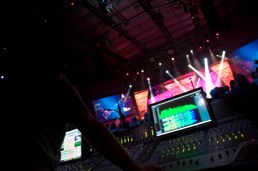
The Dynamics of Mixing with Ears Out

There’s been a lot of Twitter chatter recently on a post my friend Mike Sessler did about mixing FOH while using in-ears that was also recently re-published in Live Sound magazine. You can find the original post over at Mike’s blog here if you haven’t seen it. Today I want to offer a bit of counter-perspective to Mike’s approach.
Before I get rolling, let me say a few things first. Mike is a friend of mine, and I know he is not the kind of guy who just blindly tries things for the sake of trying things. His mix position is in a lousy location, and he’s ultimately just trying to deal with that. He and I have talked about this along with some of my reservations on his in-ears approach, and what you should keep in mind is that Mike has long term plans for solving his issues by actually moving his mix position. However, as a Technical Director, Mike has oversight over all production disciplines and has other priorities that supersede this; TD readers should know exactly where he’s coming from. Mike’s approach was an attempt at making things better working with what he had ON-HAND, and that included a really good set of custom in-ears.
I don’t want this post to necessarily be about why you shouldn’t use in-ears to mix. Mike is having good luck with his approach, and the people who sign his checks and listen in the seats are happy with the results. What I want to talk about are some concerns and cautions you should have with trying this approach along with some alternate ideas to try if you are working from a compromised mix position which, unfortunately, I know a lot of church audio mixers are in.
So let’s jump into this. My biggest caution/concern with the idea of mixing with in-ears is it takes you out of the environment you’re mixing for. I believe it is essential in any mixing to have your ears in the same environment or at least one as close as you can get to environment where the general listener is. In the studio, the goal is to have a mix that works on a number of listening platforms which these days are on average probably ranging from iPods to car stereos to computer speakers, and many mixers reference and check their mixes in those environments on those systems.
In live sound, things are much simpler because the FOH engineer really has only one priority environment to mix for: the room. Mix translation for sound reinforcement is nice to have and I believe growing in importance these days, but it is typically always secondary to the people in the room. Placing something in or over your ears takes you out of the space of your listeners. If you have acoustic instruments or monitor wedges on stage, the bleed from these things into your audience is something that needs to be accounted for in the mix. A drum kit or guitar amplifiers spilling off the stage into a smaller venue probably means those things don’t need to be as prevalent in the PA compared to a larger venue with a higher overall sound level such as a big rock show. In smaller venues, we are more often doing sound reinforcement where we reinforce our sources on stage that need help to get above acoustic sources on stage such as said drums, guitar amps, or even wedges. Adding too much of those drums or guitars to the house mix can throw the balance in the room off and impact the listeners negatively. It can also make it more difficult to get the things that need help, such as vocals, above the stage noise in the house.
Taking your head out of the game can also increase the danger of exposing your listeners to dangerous levels and painful spectral balances. When you have a volume control independent from who you’re actually mixing for, it’s easy to fall into the trap of adjusting things for yourself and not the listeners. And this leads to maybe the biggest caution/concern for me. The dynamics we hear through in-ear monitors or headphones do not match the dynamics of a live sound environment. I’m actually getting close to the point where I could write a book on why in-ears suck, and this is a big fault I have with them.
It has been my experience both on-stage as a performer and behind the FOH console that in-ears dynamics don’t translate the same. Typical live sound environments allow for a much greater dynamic range than what we prefer to experience in smaller environments like our living rooms and cars or in sealed-off environments such as headphones or in-ears. In those smaller environments, we prefer to listen to things with much more consistent dynamic range.
I’ve recently been doing some research on some of the new loudness standards and recommendations for broadcasting, and the ATSC actually has a document containing info on calibrating your studio based on the square footage of the room to help engineers be compliant with the new loudness recommendations in ITU-R BS.1770. Basically the idea is that as room sizes change so does your perception, and the perception of the mix engineer is critical to the results he will achieve. The ATSC document also has a pretty specific loudness level recommended that essentially amounts to very limited dynamic range.
Live sound on the other hand tends to be much more forgiving when it comes to dynamic range. The Night of Worship I mixed FOH for this past week easily had a dynamic range of 25 dB over a range of material from intimate stuff during communion to full on rock and roll. That wide of a range can be mixed to feel right in a larger room, but the next time you’re watching a concert on TV, try turning it up or down 25 dB or for some songs and let me know how it goes. Now, the interesting thing to me about this dynamic range is it’s a lot easier to move something mixed in a large room to a small room because we can always decrease dynamic range via compressors or even simple fader rides. However, increasing or expanding the dynamic range of something mixed in a small room or closed environment isn’t so simple.
So here are a few suggestions if your mix position is compromised and moving it isn’t an option. Personally, I would start with trying to get some sort of fill speaker(s) set up at the mix position. This might be something along the lines of nearfield studio monitors or even a smaller version of the PA speakers. These speakers should be delayed to the PA and only need to fill in what’s missing from the PA at mix position. If you’re out of direct horn coverage, you’re primarily going to be missing mid-range and high frequency information. That means you don’t need a full-range speaker; you just need something to cover what’s missing. With the aid of an FFT such as Smaart, it can fairly easy to dial something like this in to work with your PA. Keep in mind, though, I’m not advocating you build a control room somewhere and mix. I know a certain big-chair FOH mixer highly respected by myself did this for a tour, but some of my sources say that it wasn’t as successful as it is often made out to be, although I bet the board mixes were phenomenal….
If fills aren’t an option, I would gravitate towards a decent pair of headphones before trying in-ears. Headphones at least can go on and off your head easily so you can quickly move between them and the room in order to check things; this is something Mike mentions he does in his post along with having his assistant standing next to him listening to the room.
The fidelity of a decent pair of headphones is also probably going to be higher than in-ear monitors. In-ears have come a long way since their inception, but I don’t think the fidelity quite compares at this point in time without spending a good chunk of change on really good custom in-ears, and at that point you’re moving into a price point where you could probably just as easily get some fill speakers instead. Even with high end in-ears, I still don’t think the itty-bitty drivers will do low frequencies the same as a larger headphone driver. A decent set of headphones is also probably the most economic solution. Sony 7506’s are a long time favorite for a lot of guys and can be found on the street in the range of $100.
I know that not everyone is as fortunate as I am to have their mix position in a good location like we do at our campuses, but even though I’m in a good place right now that hasn’t always been the case. If you’re going to start trying some things to help with a poor mix location such as fill speakers or headphones or even in-ear monitors, I’d highly recommend you do everything you can to at a minimum keep your ears in the same air as the people who are sitting in rows. Also remember that these approaches shouldn’t be a replacement for walking around the room and getting out where people will actually listen. I am a believer in doing what you have to do to make things work, and ultimately that’s what I believe Mike is trying to do in his approach. But you also have to remember that Mike has spent time listening to things throughout his room, and he’s not alone in doing this. Last summer when I got to spend some time with Robert Scovill, I followed him all over the arena while he listened to his system. Remember that no matter what level you’re at or how you try and make things work, you still need to get out from behind the console and listen to what’s going on in the room.

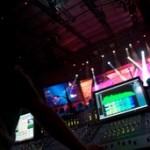 Next Post
Next Post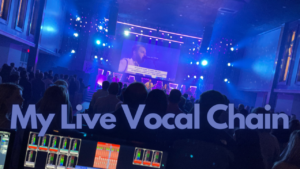

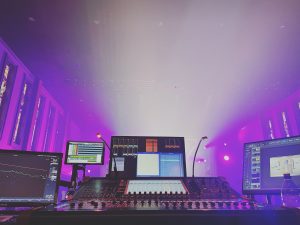
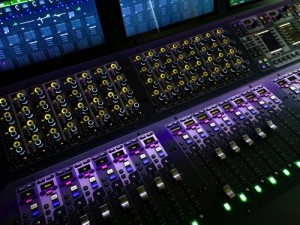



Thanks for the insight Dave. I read Mike’s post, respect him a ton, and still was really unsure of how much I could buy into it and incorporate into my situation. I just had some concerns that held me back. We also talked about it a bit at the Florida CTDRT meetup on Thursday as well most of us were on the same page, we like the concept but going to it as primary was too far for us. I’ve always felt like I needed to be in the same listening environment as the people I was mixing for. I go to headphones to work on blends and occasionally EQs during rehearsal but I try to avoid anything once we go live unless I have to. I still even prefer to EQ with my target input just louder in the mix but still in reference to everything else. I have a nice rig in my room and it’s acoustically… above average. It is a bit more live than I’d prefer. When i spend time in headphones I am quickly aware that headphones/IEs are a nice dead “room” and not the same sonically as the sanctuary. Our room gets a bit reflective in the highs and once the seats fill in it tightens up well but the lows don’t make it back to FOH like I wished (due to 2 more 700HPs not making the budget cut).
I also understand that monitor quality listening is going to be less forgiving than the house. Any board mix recorded with a struggling vocal in it is evidence of that, they jump right out at you. So, if you can tweak and mix the isolated mix to sound great, then it SHOULD benefit the house mix too. What a conundrum, haha. I think I’d have to have a near-perfect room to mix in before I’d be comfortable hiding in aural isolation for more than seconds at a time.
That being said, if the house was that good, I’d never want to go into isolation. Maybe I am in the large majority that are in the middle 75% or so if us. The room sounds pretty good but needs to be tamed at times and my mix postion is pretty good as well (ours is not centered and a little far back). There are some that have such sonically impressive rooms that they could mix anywhere and it wouldn’t matter and there are others that have troublesome rooms or just plain bad FOH locations, maybe the isolation is for them.
All in all, I like being in the same air, as you put it. I will experience the dynamics and nuances (or lack thereof) that the attendees do and I can then be confident in what they are hearing. Thanks for the info you share here.